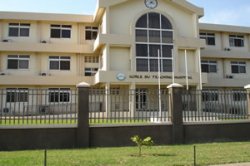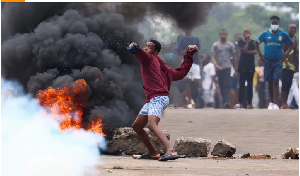The Reconstructive Plastic Surgery and Burns Centre at the Korle Bu Teaching Hospital admits about 360 cases of severe burns each year.
Dr Opoku Ware Ampomah, Director of the Centre, attributed the number to the high incidence of burns cases in the country, saying 50 per cent of burns in Ghana involved children.
He said about 45 per cent of burn cases came into contact with hot liquids such as water and soup.
Dr Ampomah said this at the closing ceremony of a two day trainer of trainers workshop organized by the St John Ambulance Ghana (SJAG) for its first aid providers across the country.
He appealed to Ghanaians to do all they could to avoid burns as it treatment of burn ailments were very expensive saying an average burns cases which cover about 40 to 50 per cent of the body costs not less GH?30,000.00.
Dr Ampomah said a person who has about 30 per cent of his or her body with burns was likely to develop other challenges with other vital organs of the body including the intestines.
He urged first aid providers to be patient with people with burns as they tend to be hysterical adding that people who suffer from electrical injuries could also suffer from shocks, infections, seizures, headaches, spinal cord challenges and cataracts.
Dr Ampomah appealed to first aid providers to be very cautious of their own safety when giving first aid and avoid firefighting when giving care during fire outbreaks.
He called on Government to incorporate the knowledge of first aid provision to our educational curriculum to help witnesses of an accident, to provide the basic assistance needed.
Mr Tony Kwame Apedzi, Chief Executive Officer, St John’s Ambulance Ghana (SJAG), called on Government to adequately resource the Emergency Medical Service (EMS) providers to enable them effectively support the National Ambulance Service.
He said EMS providers such as SJAG needed ambulances and funding to procure equipment such as mannequins and other items needed in the training of its volunteers as well as the execution of its mandate.
Mr Apedzi said EMS providers such as the SJAG and the Ghana Red Cross were mostly the first respondents during emergencies and they needed to be well resourced to perform effectively.
He said in an effort to help curb the numerous avoidable deaths which occurred after accidents, the organisation was planning on training people in accident prone communities so that they would be in a better position to help when the need arose.
“All these laudable initiatives come with funding and other teaching aids such as mannequins and others”, he said.
He said the two–day workshop which drew 30 participants is being organised every three months to build the capacity of volunteers.
Health News of Thursday, 10 March 2016
Source: GNA
Korle Bu attends to 360 burns cases annually - Director
 File photo
File photo
Business















